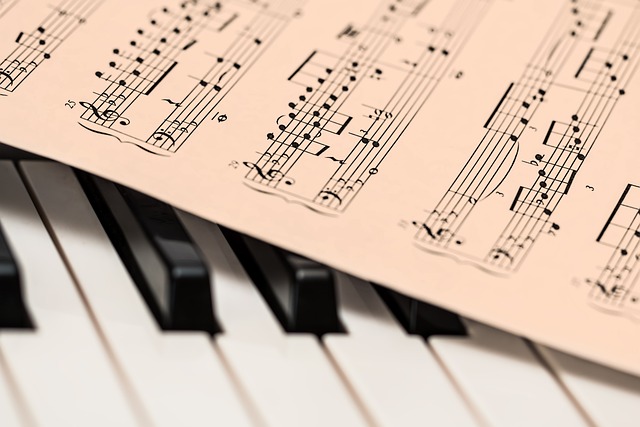
Unveiling the Melodies of Culture: Exploring the Enchanting World of Folklore Music
Folklore music is a captivating and diverse art form that carries with it the rich tapestry of cultural heritage. Originating from various regions around the world, folklore music has been passed down through generations, serving as both a means of storytelling and a reflection of societal values.
This article delves into the origins, symbolism, regional variations, and instruments used in folklore music. Additionally, it explores the efforts made to preserve and revive this enchanting genre in our modern era.
Join us on this journey as we unravel the melodies that encompass our collective cultural identity.
Key Takeaways
- Folklore music has its roots in ancient civilizations and has evolved as a means of human expression and communication.
- It holds cultural significance and symbolism, reflecting customs and beliefs of a community, and serving as a powerful medium for storytelling.
- Regional variations and styles in folklore music highlight the diverse range of musical expressions rooted in specific geographical areas.
- Instruments used in folklore music vary widely across cultures and regions, with each instrument carrying its own significance and adding depth to compositions.
The Origins of Folklore Music
The origins of folklore music can be traced back to ancient civilizations and their cultural traditions. It is believed that the evolution of this genre began with the need for human expression and communication.
As communities formed, people started to share stories, myths, and legends through oral tradition. These tales were often accompanied by simple melodies or rhythmic patterns created using primitive musical instruments such as drums or flutes.
Over time, folklore music became an integral part of various cultural practices and rituals. It served as a means of preserving history, passing down values, and fostering a sense of identity within communities.
The evolution of folklore music continued as different societies interacted with one another, leading to the incorporation of new musical elements and techniques into existing traditions.
Today, this enchanting world continues to captivate audiences around the globe with its rich heritage and diverse melodies.

Cultural Significance and Symbolism in Folklore Music
Symbolism and cultural significance play a prominent role in the realm of traditional music. Folklore music is deeply intertwined with cultural traditions, serving as a means to pass down stories and legends from one generation to another. It acts as a vessel for storytelling, allowing communities to preserve their history and values through melodic narratives.
To fully appreciate the enchanting world of folklore music, it is essential to understand its cultural significance and symbolism. Here are three key aspects that contribute to this rich tradition:
Cultural Traditions: Folklore music reflects the customs and beliefs of a particular culture or community. Each melody carries within it the essence of generations past, capturing the spirit and identity of a people.
Storytelling through Music: Folklore music serves as a powerful medium for storytelling. The melodies convey tales of heroes, love, tragedy, and triumphs, transporting listeners into different worlds filled with vivid imagery.
Symbolic Representations: Many instruments used in folklore music hold symbolic value within their respective cultures. For example, the bagpipes in Scottish folklore symbolize bravery and resilience.
In conclusion, folklore music not only entertains but also connects individuals to their cultural heritage by preserving traditions and telling captivating stories through melodious tunes.
Regional Variations and Styles of Folklore Music
Regional variations and styles of folklore music showcase a diverse range of musical expressions that are deeply rooted in specific geographical areas and cultural traditions. Influences and adaptations in folklore music have shaped the evolution and modernization of regional folklore music, resulting in unique sounds and melodies.
Each region has its own distinct musical characteristics, influenced by historical events, migration patterns, and interactions with neighboring cultures. For example, Celtic folk music is known for its lively fiddle tunes and intricate dance rhythms, while Appalachian folk music incorporates elements from Scottish, Irish, African-American, and Native American traditions.
Regional variations can also be seen in the instruments used, such as the accordion in French Canadian folk music or the banjo in American bluegrass. These regional variations highlight the rich tapestry of global folklore music and offer a glimpse into the cultural heritage of different communities.

Instruments Used in Folklore Music
Instruments used in folklore music vary widely across different cultures and regions, reflecting the unique musical traditions and expressions of each community. Traditional instruments play a crucial role in preserving cultural heritage and transmitting it from one generation to another.
These instruments are often handmade by skilled artisans using natural materials such as wood, animal skins, or plant fibers. Musical traditions passed down through generations provide the foundation for the development and evolution of these instruments.
From the haunting sound of bagpipes in Scottish folk music to the rhythmic beats of African drums, each instrument carries its own significance and adds depth to the overall composition. The diversity of traditional instruments highlights the rich tapestry of folklore music worldwide, capturing the essence and spirit of different communities through their enchanting melodies.
Preserving and Reviving Folklore Music in the Modern Era
Preserving and reviving folklore music in the modern era requires a concerted effort to ensure its continuity and relevance within contemporary society. As societies evolve and embrace new musical genres, it is crucial to find ways to preserve traditional folk music while also allowing for contemporary adaptations. This delicate balance between honoring the past and embracing the present can be achieved through various means.
One approach is through the documentation and archiving of traditional songs, melodies, and instruments. By preserving these cultural artifacts, future generations can have access to their heritage and understand the roots of their musical traditions. Additionally, collaborations between traditional folk musicians and contemporary artists can help bring folklore music into the mainstream while maintaining its authenticity.
To better illustrate this concept, consider the following table:
| Traditional Folk Music |
Contemporary Adaptations |
Collaborative Projects |
| Preservation of original melodies dating back centuries |
Incorporation of modern instruments or electronic elements |
Joint performances combining traditional folk musicians with popular artists |
| Emphasis on oral transmission from older generations |
Remixing or sampling traditional songs in new compositions |
Fusion albums featuring both traditional folk musicians and contemporary bands |
| Cultural festivals dedicated to showcasing authentic folklore music |
Folk-inspired genres like neofolk or folk-rock gaining popularity |
Concerts that feature both traditional folk ensembles as well as modern acts |
By implementing these strategies, we can ensure that folklore music remains vibrant, relevant, and cherished by future generations while simultaneously embracing contemporary adaptations.
Frequently Asked Questions
How does folklore music contribute to the development of oral traditions in different cultures?
Folklore music contributes to the passing down of cultural traditions through cultural transmission. It fosters a sense of community within different cultures by promoting social cohesion and creating a shared identity among its members.
What role does folklore music play in religious or spiritual ceremonies?
Folklore music holds cultural significance as it reflects the beliefs and values of a particular culture. It promotes emotional well-being and connects individuals to their spiritual beliefs, playing a crucial role in religious or spiritual ceremonies.

Technology has had a profound impact on the performance and preservation of folklore music. Through advancements in digital recording and storage, traditional songs and melodies can now be easily documented and shared, ensuring their longevity for future generations.
Specific dance forms associated with folklore music include the Irish jig, the Flamenco in Spain, and the traditional Maypole dance in Sweden. These dances are characterized by intricate footwork, rhythmic movements, and vibrant traditional costumes.
How do contemporary artists incorporate elements of folklore music into their own compositions?
Contemporary artists incorporate elements of folklore music into their own compositions through contemporary adaptations and fusion genres. They blend traditional melodies, rhythms, and instruments with modern styles to create a unique and captivating sound that appeals to a wide audience.
 SportsHollywoodLifestyleFashionHome & GardenTrendsPrivacy PolicyTerms And Conditions
SportsHollywoodLifestyleFashionHome & GardenTrendsPrivacy PolicyTerms And Conditions
